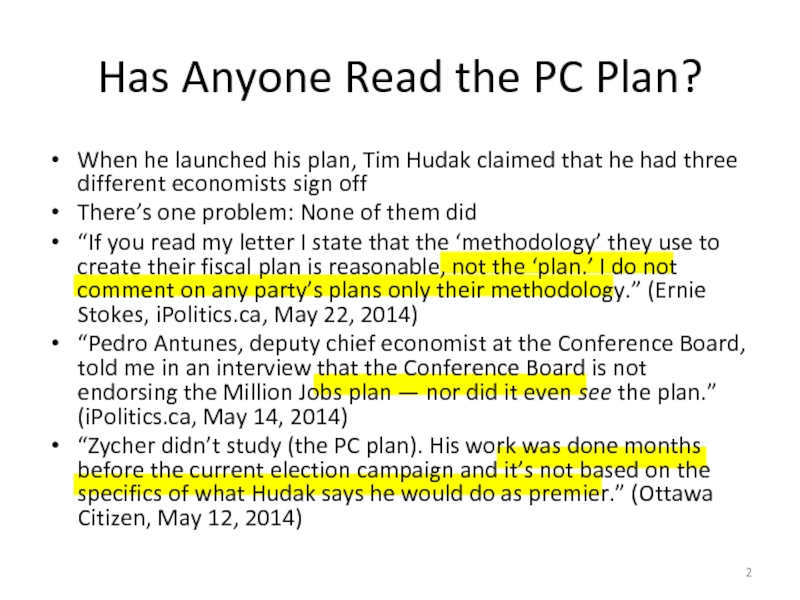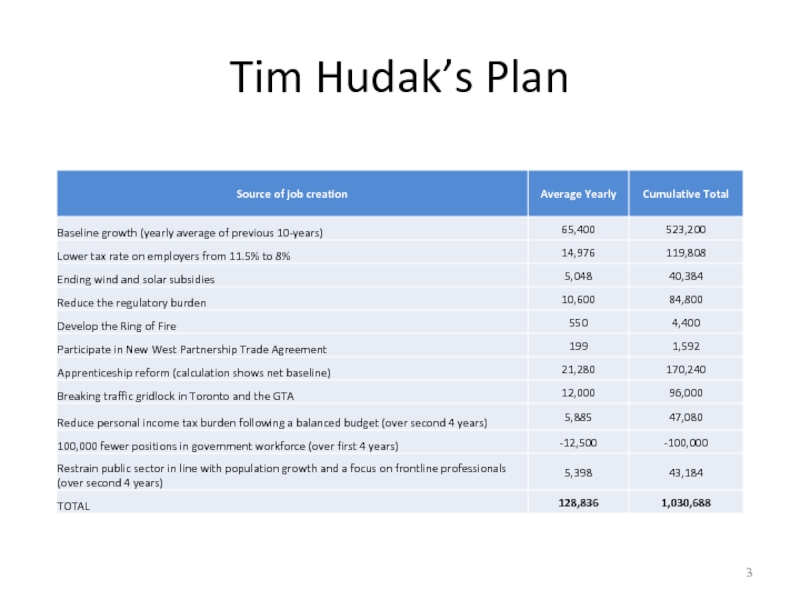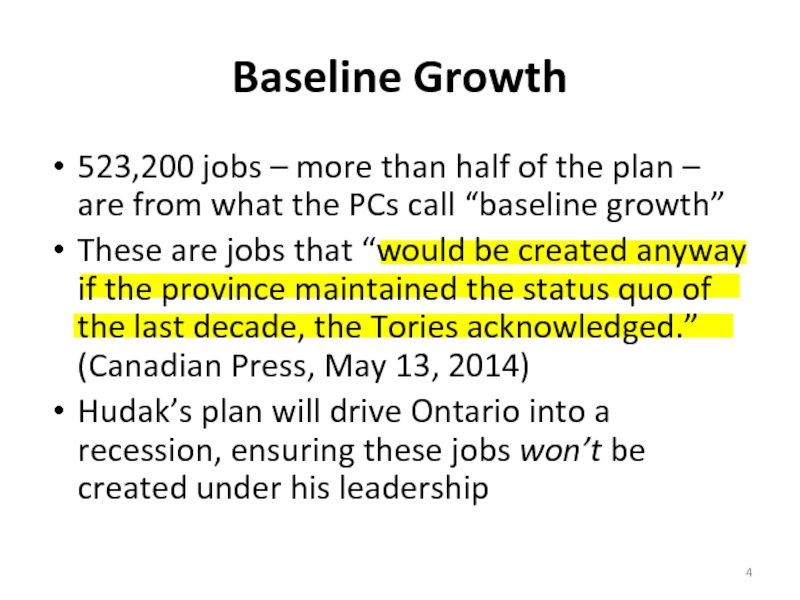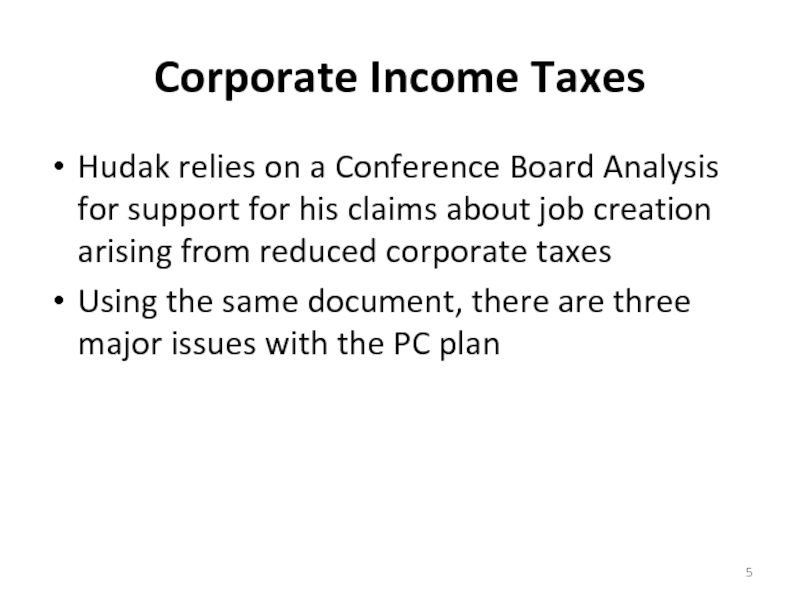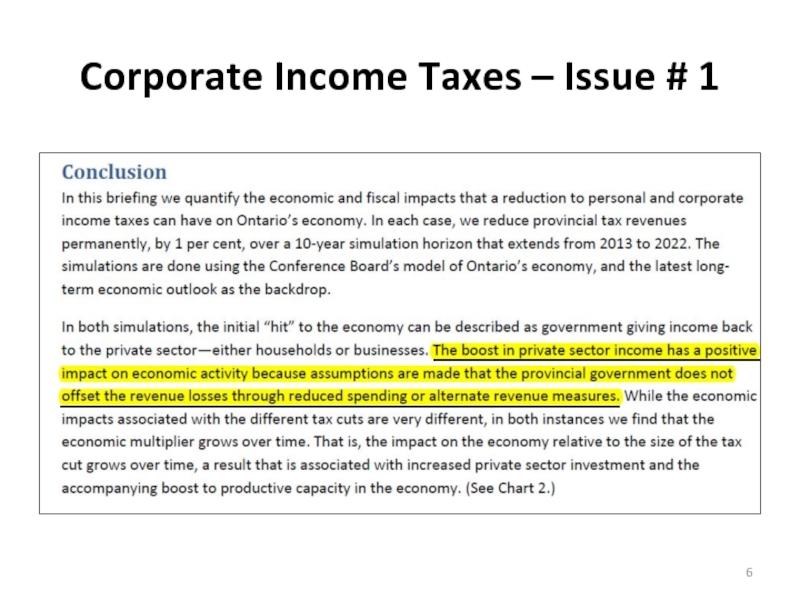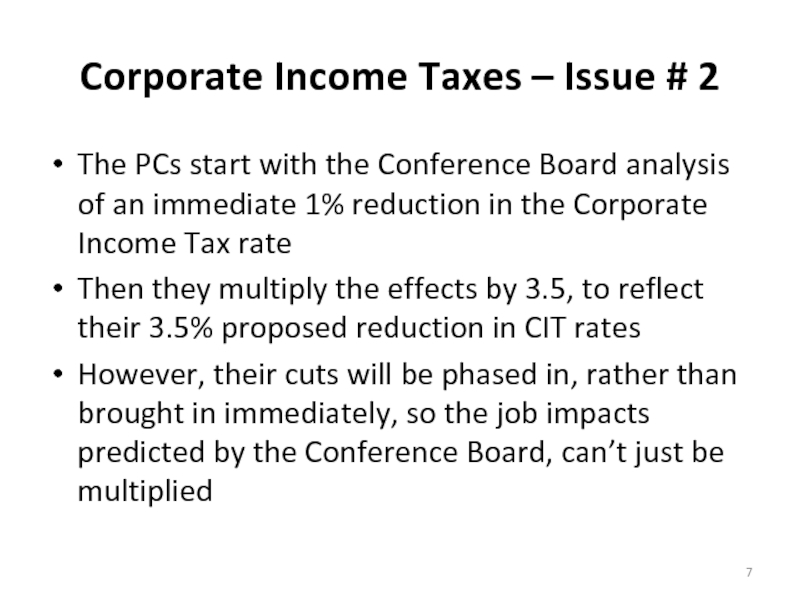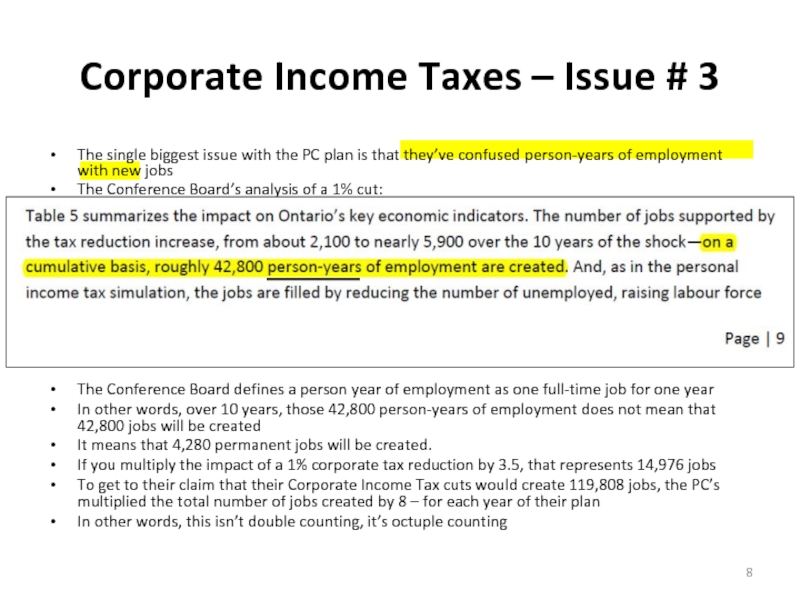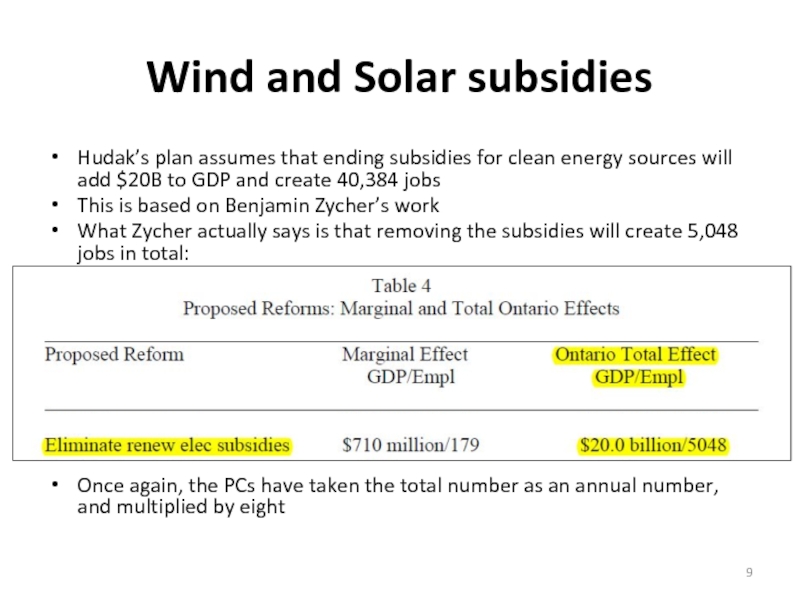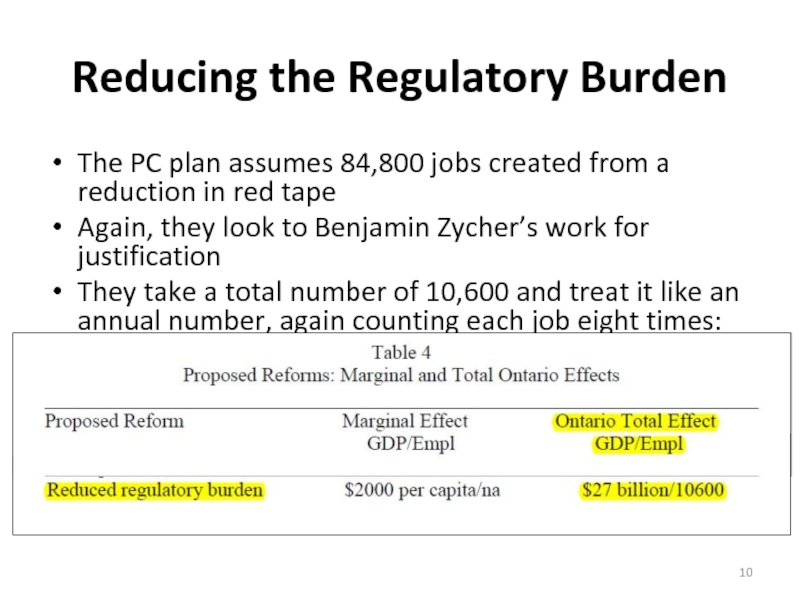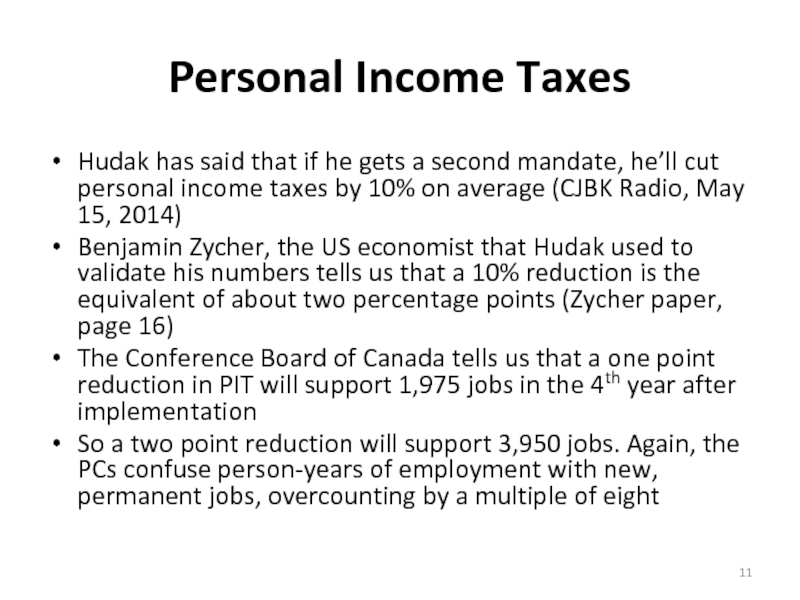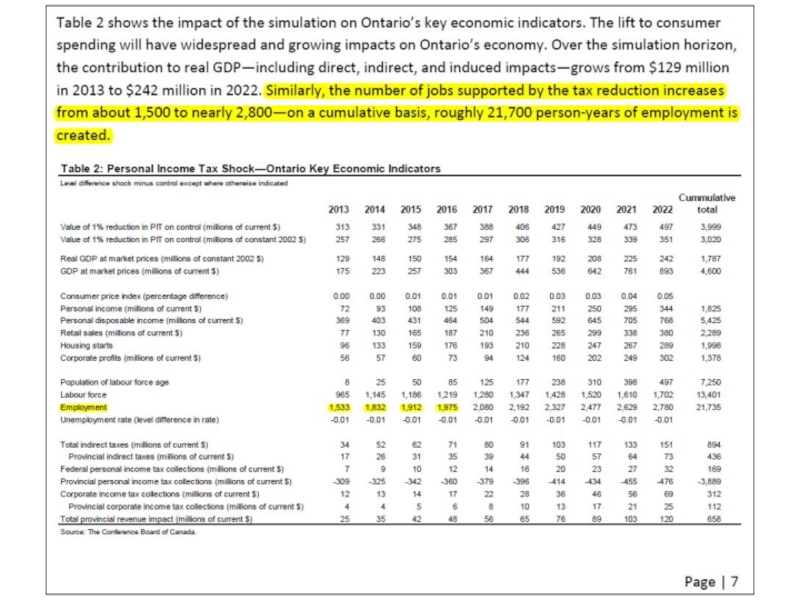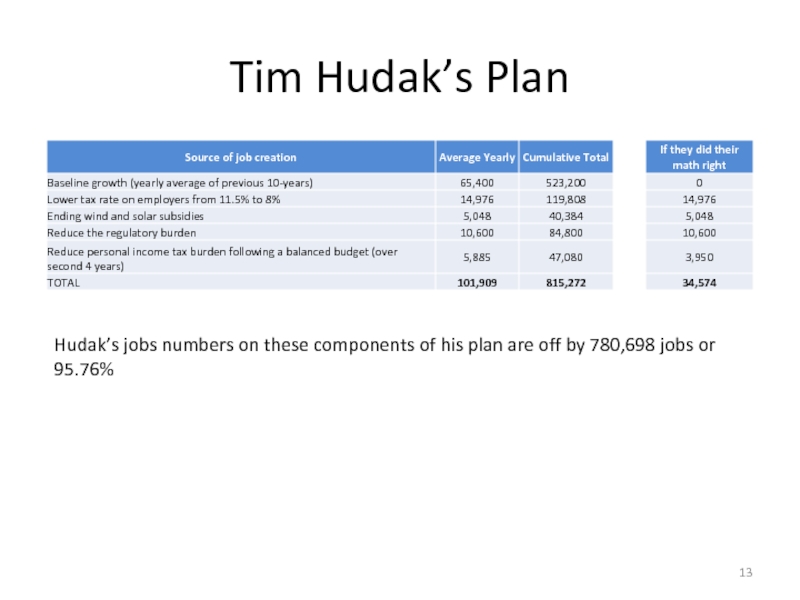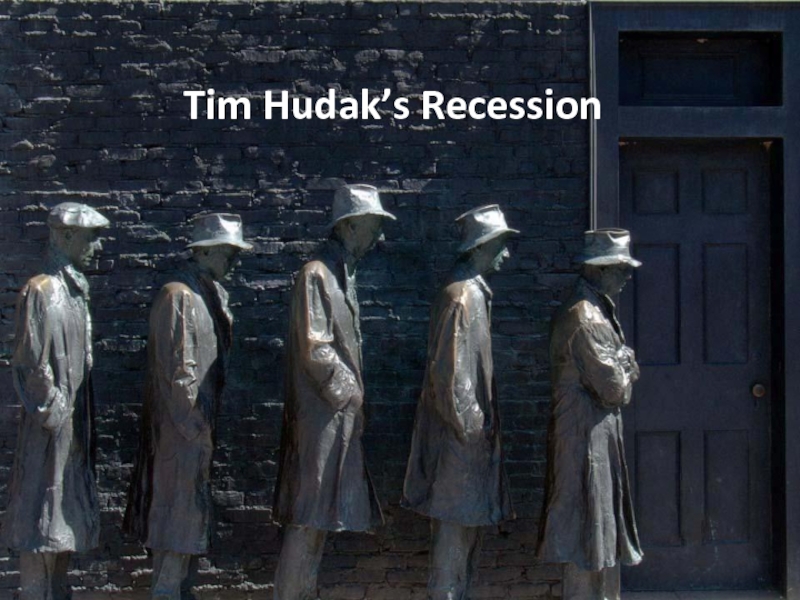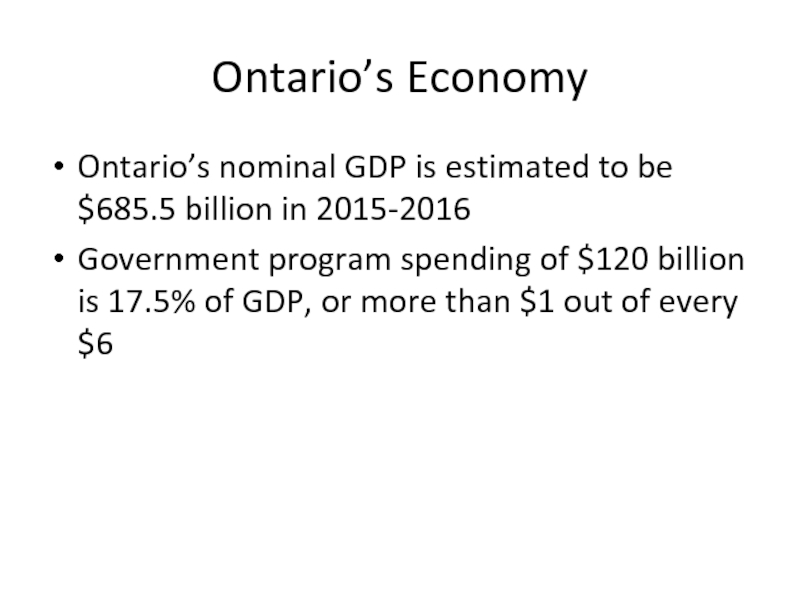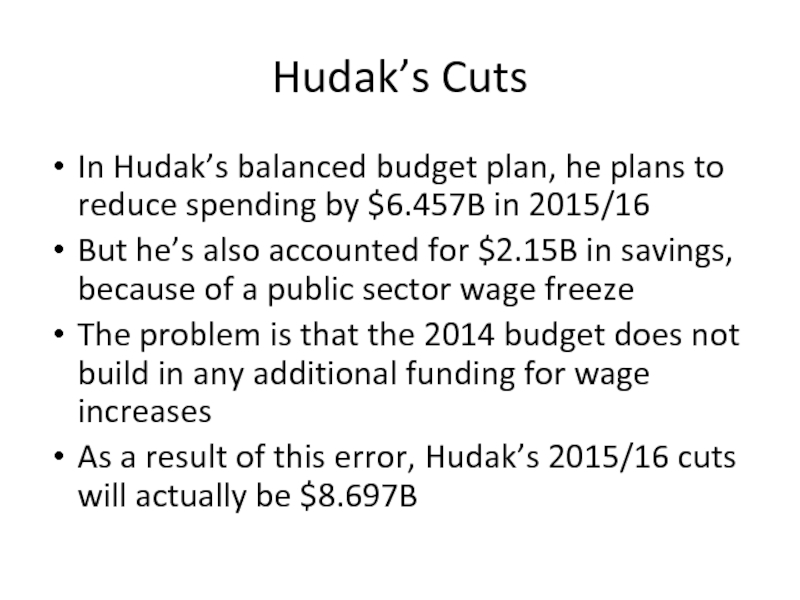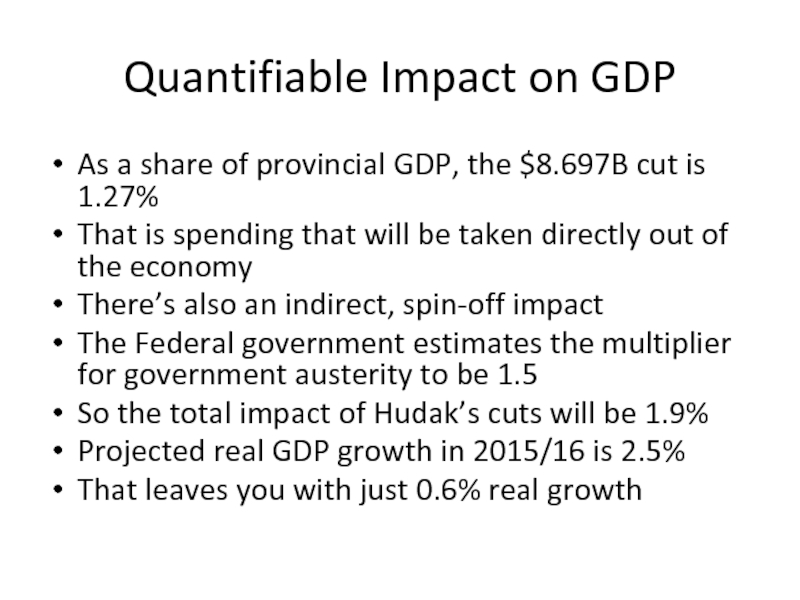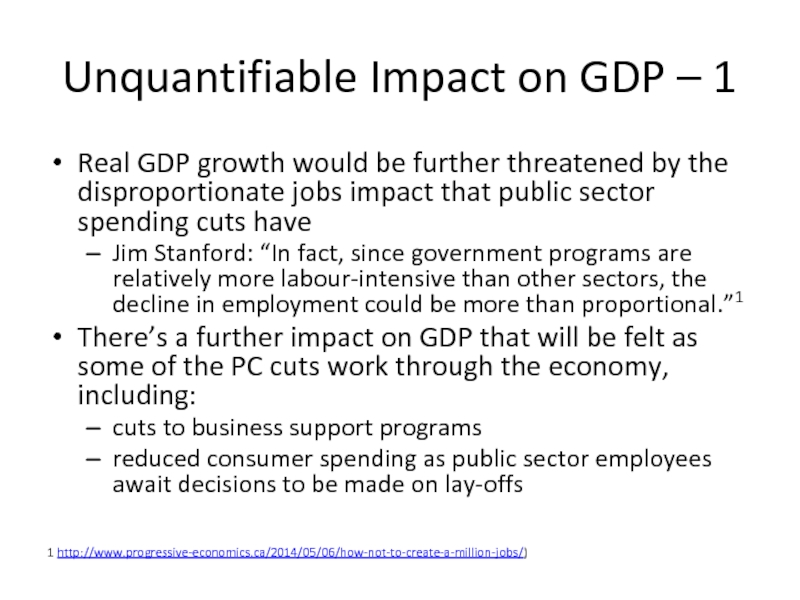- Главная
- Разное
- Дизайн
- Бизнес и предпринимательство
- Аналитика
- Образование
- Развлечения
- Красота и здоровье
- Финансы
- Государство
- Путешествия
- Спорт
- Недвижимость
- Армия
- Графика
- Культурология
- Еда и кулинария
- Лингвистика
- Английский язык
- Астрономия
- Алгебра
- Биология
- География
- Детские презентации
- Информатика
- История
- Литература
- Маркетинг
- Математика
- Медицина
- Менеджмент
- Музыка
- МХК
- Немецкий язык
- ОБЖ
- Обществознание
- Окружающий мир
- Педагогика
- Русский язык
- Технология
- Физика
- Философия
- Химия
- Шаблоны, картинки для презентаций
- Экология
- Экономика
- Юриспруденция
Tim Hudak's Jobs Fail презентация
Содержание
- 2. Has Anyone Read
- 3. Tim Hudak’s Plan
- 4. Baseline Growth 523,200 jobs
- 5. Corporate Income Taxes Hudak relies on a
- 6. Corporate Income Taxes – Issue # 1
- 7. Corporate Income Taxes – Issue # 2
- 8. Corporate Income Taxes – Issue
- 9. Wind and Solar subsidies Hudak’s plan
- 10. Reducing the Regulatory Burden The PC plan
- 11. Personal Income Taxes Hudak has said that
- 13. Tim Hudak’s Plan Hudak’s jobs numbers on
- 14. Tim Hudak’s Recession
- 15. Ontario’s Economy Ontario’s nominal GDP is estimated
- 16. Hudak’s Cuts In Hudak’s balanced budget plan,
- 17. Quantifiable Impact on GDP As a share
- 18. Unquantifiable Impact on GDP – 1 Real
- 19. Unquantifiable Impact on GDP – 2
Слайд 2
Has Anyone Read the PC Plan?
When he launched his plan, Tim
Hudak claimed that he had three different economists sign off
There’s one problem: None of them did
“If you read my letter I state that the ‘methodology’ they use to create their fiscal plan is reasonable, not the ‘plan.’ I do not comment on any party’s plans only their methodology.” (Ernie Stokes, iPolitics.ca, May 22, 2014)
“Pedro Antunes, deputy chief economist at the Conference Board, told me in an interview that the Conference Board is not endorsing the Million Jobs plan — nor did it even see the plan.” (iPolitics.ca, May 14, 2014)
“Zycher didn’t study (the PC plan). His work was done months before the current election campaign and it’s not based on the specifics of what Hudak says he would do as premier.” (Ottawa Citizen, May 12, 2014)
There’s one problem: None of them did
“If you read my letter I state that the ‘methodology’ they use to create their fiscal plan is reasonable, not the ‘plan.’ I do not comment on any party’s plans only their methodology.” (Ernie Stokes, iPolitics.ca, May 22, 2014)
“Pedro Antunes, deputy chief economist at the Conference Board, told me in an interview that the Conference Board is not endorsing the Million Jobs plan — nor did it even see the plan.” (iPolitics.ca, May 14, 2014)
“Zycher didn’t study (the PC plan). His work was done months before the current election campaign and it’s not based on the specifics of what Hudak says he would do as premier.” (Ottawa Citizen, May 12, 2014)
Слайд 4
Baseline Growth
523,200 jobs – more than half of the plan –
are from what the PCs call “baseline growth”
These are jobs that “would be created anyway if the province maintained the status quo of the last decade, the Tories acknowledged.” (Canadian Press, May 13, 2014)
Hudak’s plan will drive Ontario into a recession, ensuring these jobs won’t be created under his leadership
These are jobs that “would be created anyway if the province maintained the status quo of the last decade, the Tories acknowledged.” (Canadian Press, May 13, 2014)
Hudak’s plan will drive Ontario into a recession, ensuring these jobs won’t be created under his leadership
Слайд 5Corporate Income Taxes
Hudak relies on a Conference Board Analysis for support
for his claims about job creation arising from reduced corporate taxes
Using the same document, there are three major issues with the PC plan
Using the same document, there are three major issues with the PC plan
Слайд 7Corporate Income Taxes – Issue # 2
The PCs start with the
Conference Board analysis of an immediate 1% reduction in the Corporate Income Tax rate
Then they multiply the effects by 3.5, to reflect their 3.5% proposed reduction in CIT rates
However, their cuts will be phased in, rather than brought in immediately, so the job impacts predicted by the Conference Board, can’t just be multiplied
Then they multiply the effects by 3.5, to reflect their 3.5% proposed reduction in CIT rates
However, their cuts will be phased in, rather than brought in immediately, so the job impacts predicted by the Conference Board, can’t just be multiplied
Слайд 8
Corporate Income Taxes – Issue # 3
The single biggest issue with
the PC plan is that they’ve confused person-years of employment with new jobs
The Conference Board’s analysis of a 1% cut:
The Conference Board defines a person year of employment as one full-time job for one year
In other words, over 10 years, those 42,800 person-years of employment does not mean that 42,800 jobs will be created
It means that 4,280 permanent jobs will be created.
If you multiply the impact of a 1% corporate tax reduction by 3.5, that represents 14,976 jobs
To get to their claim that their Corporate Income Tax cuts would create 119,808 jobs, the PC’s multiplied the total number of jobs created by 8 – for each year of their plan
In other words, this isn’t double counting, it’s octuple counting
The Conference Board’s analysis of a 1% cut:
The Conference Board defines a person year of employment as one full-time job for one year
In other words, over 10 years, those 42,800 person-years of employment does not mean that 42,800 jobs will be created
It means that 4,280 permanent jobs will be created.
If you multiply the impact of a 1% corporate tax reduction by 3.5, that represents 14,976 jobs
To get to their claim that their Corporate Income Tax cuts would create 119,808 jobs, the PC’s multiplied the total number of jobs created by 8 – for each year of their plan
In other words, this isn’t double counting, it’s octuple counting
Слайд 9Wind and Solar subsidies
Hudak’s plan assumes that ending subsidies for clean
energy sources will add $20B to GDP and create 40,384 jobs
This is based on Benjamin Zycher’s work
What Zycher actually says is that removing the subsidies will create 5,048 jobs in total:
Once again, the PCs have taken the total number as an annual number, and multiplied by eight
This is based on Benjamin Zycher’s work
What Zycher actually says is that removing the subsidies will create 5,048 jobs in total:
Once again, the PCs have taken the total number as an annual number, and multiplied by eight
Слайд 10Reducing the Regulatory Burden
The PC plan assumes 84,800 jobs created from
a reduction in red tape
Again, they look to Benjamin Zycher’s work for justification
They take a total number of 10,600 and treat it like an annual number, again counting each job eight times:
m
Again, they look to Benjamin Zycher’s work for justification
They take a total number of 10,600 and treat it like an annual number, again counting each job eight times:
m
Слайд 11Personal Income Taxes
Hudak has said that if he gets a second
mandate, he’ll cut personal income taxes by 10% on average (CJBK Radio, May 15, 2014)
Benjamin Zycher, the US economist that Hudak used to validate his numbers tells us that a 10% reduction is the equivalent of about two percentage points (Zycher paper, page 16)
The Conference Board of Canada tells us that a one point reduction in PIT will support 1,975 jobs in the 4th year after implementation
So a two point reduction will support 3,950 jobs. Again, the PCs confuse person-years of employment with new, permanent jobs, overcounting by a multiple of eight
Benjamin Zycher, the US economist that Hudak used to validate his numbers tells us that a 10% reduction is the equivalent of about two percentage points (Zycher paper, page 16)
The Conference Board of Canada tells us that a one point reduction in PIT will support 1,975 jobs in the 4th year after implementation
So a two point reduction will support 3,950 jobs. Again, the PCs confuse person-years of employment with new, permanent jobs, overcounting by a multiple of eight
Слайд 13Tim Hudak’s Plan
Hudak’s jobs numbers on these components of his plan
are off by 780,698 jobs or 95.76%
Слайд 15Ontario’s Economy
Ontario’s nominal GDP is estimated to be $685.5 billion in
2015-2016
Government program spending of $120 billion is 17.5% of GDP, or more than $1 out of every $6
Government program spending of $120 billion is 17.5% of GDP, or more than $1 out of every $6
Слайд 16Hudak’s Cuts
In Hudak’s balanced budget plan, he plans to reduce spending
by $6.457B in 2015/16
But he’s also accounted for $2.15B in savings, because of a public sector wage freeze
The problem is that the 2014 budget does not build in any additional funding for wage increases
As a result of this error, Hudak’s 2015/16 cuts will actually be $8.697B
But he’s also accounted for $2.15B in savings, because of a public sector wage freeze
The problem is that the 2014 budget does not build in any additional funding for wage increases
As a result of this error, Hudak’s 2015/16 cuts will actually be $8.697B
Слайд 17Quantifiable Impact on GDP
As a share of provincial GDP, the $8.697B
cut is 1.27%
That is spending that will be taken directly out of the economy
There’s also an indirect, spin-off impact
The Federal government estimates the multiplier for government austerity to be 1.5
So the total impact of Hudak’s cuts will be 1.9%
Projected real GDP growth in 2015/16 is 2.5%
That leaves you with just 0.6% real growth
That is spending that will be taken directly out of the economy
There’s also an indirect, spin-off impact
The Federal government estimates the multiplier for government austerity to be 1.5
So the total impact of Hudak’s cuts will be 1.9%
Projected real GDP growth in 2015/16 is 2.5%
That leaves you with just 0.6% real growth
Слайд 18Unquantifiable Impact on GDP – 1
Real GDP growth would be further
threatened by the disproportionate jobs impact that public sector spending cuts have
Jim Stanford: “In fact, since government programs are relatively more labour-intensive than other sectors, the decline in employment could be more than proportional.”1
There’s a further impact on GDP that will be felt as some of the PC cuts work through the economy, including:
cuts to business support programs
reduced consumer spending as public sector employees await decisions to be made on lay-offs
Jim Stanford: “In fact, since government programs are relatively more labour-intensive than other sectors, the decline in employment could be more than proportional.”1
There’s a further impact on GDP that will be felt as some of the PC cuts work through the economy, including:
cuts to business support programs
reduced consumer spending as public sector employees await decisions to be made on lay-offs
1 http://www.progressive-economics.ca/2014/05/06/how-not-to-create-a-million-jobs/)
Слайд 19Unquantifiable Impact on GDP – 2
As GDP growth falls, the
revenue coming in to government falls as well
This requires further cuts to keep the balanced budget plan on track
These impacts are difficult to quantify, but will reduce GDP growth further
This requires further cuts to keep the balanced budget plan on track
These impacts are difficult to quantify, but will reduce GDP growth further

